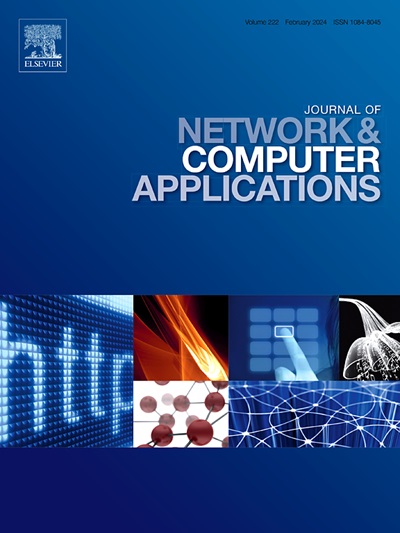DBASC: Decentralized blockchain-based architecture with integration of smart contracts for secure communication in VANETs
IF 8
2区 计算机科学
Q1 COMPUTER SCIENCE, HARDWARE & ARCHITECTURE
引用次数: 0
Abstract
The need for secure and effective communication in vehicular networks is fundamental to the successful development of connected and autonomous vehicles. In this research, we propose a decentralized blockchain-based architecture for vehicular authentication and message exchange, using smart contracts to increase trust, and security. The process of authentication and the transferring of data has been intentionally segregated into blockchains and designed with regard to two types of velocities that have the ability to impact them, tailored to their specific functions and operational dynamics. The authentication blockchain uses a lightweight consensus mechanism specific to quickly verify the identity of entities, helping to form mutual trust. In contrast, the communication blockchain uses a heavier consensus mechanism to ensure integrity and traceability of the messages within the network. This means that there are two different types of consensus mechanisms on each of the blockchains; one which has a low concern for security to authenticate the ‘fact of identity’, and the second, which securely (i.e. conspirators accountability) maintain integrity and assurance for the contents of the messages shared on the second blockchain. The segregation of functionality thus had the effect of improving the performance and scalability of the entire network, and posing an additional layer of security, minimizing the attack surface, and reducing the complexity of consensus per blockchain. The smart contract form of the dual blockchain architecture successfully gives a secure, efficient, and scalable means of managing vehicle communication in decentralized intelligent transportation systems.
DBASC:基于区块链的去中心化架构,在vanet中集成了用于安全通信的智能合约
车辆网络中安全有效的通信需求是成功开发联网和自动驾驶汽车的基础。在这项研究中,我们提出了一种分散的基于区块链的架构,用于车辆身份验证和消息交换,使用智能合约来增加信任和安全性。身份验证和数据传输的过程被有意地分离到区块链中,并根据能够影响它们的两种类型的速度进行设计,根据它们的特定功能和操作动态进行定制。身份验证区块链使用特定的轻量级共识机制来快速验证实体的身份,有助于形成相互信任。相比之下,通信区块链使用更严格的共识机制来确保网络中消息的完整性和可追溯性。这意味着每个区块链上都有两种不同类型的共识机制;一个对验证“身份事实”的安全性关注较低,另一个则安全地(即阴谋者问责制)维护第二个区块链上共享的消息内容的完整性和保证。因此,功能隔离具有提高整个网络的性能和可扩展性的效果,并提供了额外的安全层,最大限度地减少了攻击面,并降低了每个区块链共识的复杂性。双区块链架构的智能合约形式成功地为分散智能交通系统中的车辆通信管理提供了一种安全、高效和可扩展的方式。
本文章由计算机程序翻译,如有差异,请以英文原文为准。
求助全文
约1分钟内获得全文
求助全文
来源期刊

Journal of Network and Computer Applications
工程技术-计算机:跨学科应用
CiteScore
21.50
自引率
3.40%
发文量
142
审稿时长
37 days
期刊介绍:
The Journal of Network and Computer Applications welcomes research contributions, surveys, and notes in all areas relating to computer networks and applications thereof. Sample topics include new design techniques, interesting or novel applications, components or standards; computer networks with tools such as WWW; emerging standards for internet protocols; Wireless networks; Mobile Computing; emerging computing models such as cloud computing, grid computing; applications of networked systems for remote collaboration and telemedicine, etc. The journal is abstracted and indexed in Scopus, Engineering Index, Web of Science, Science Citation Index Expanded and INSPEC.
 求助内容:
求助内容: 应助结果提醒方式:
应助结果提醒方式:


